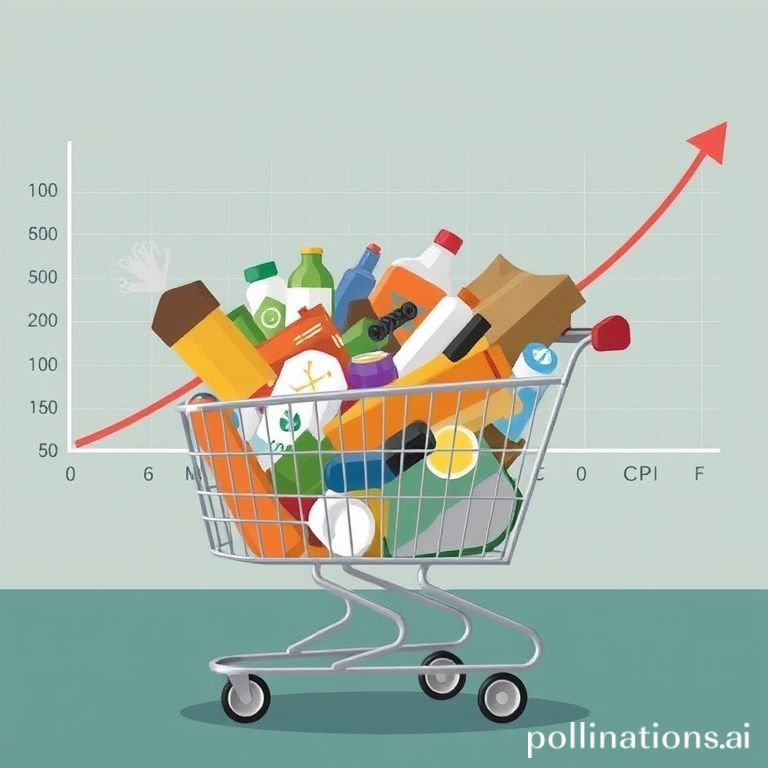
For many decades, the Consumer Price Index (CPI) has served as the primary indicator for measuring the cost of living across America. It is a widely cited statistic, offering a broad snapshot of price changes for a vast array of goods and services. However, this established metric might not be capturing the full scope of inflation's impact, especially on the financial realities of average Americans.
According to Gene Ludwig, a former U.S. Comptroller of the Currency and founder of the Ludwig Institute for Shared Economic Prosperity (LISEP), the CPI paints an incomplete picture. Ludwig, who served as comptroller from 1993 to 1998, argues that the CPI, which tracks thousands of items, isn't truly reflective of the lived economic experiences of middle- and low-income households. These groups typically focus their spending on a smaller, more essential basket of goods and services, rather than the expansive range covered by the CPI.
The Disconnect Between Data and Daily Life
Ludwig highlights a critical issue: the standard CPI basket includes items that many households simply do not regularly purchase. "The CPI is not tremendously relevant to the lived experience of middle- and low-income Americans who don’t buy 80,000 goods and services," he stated in a recent interview. He further emphasizes that for statistics to be truly meaningful and impactful for these demographics, they must focus on the items that fundamentally matter to their daily lives and budgets. This perspective underscores a growing concern that official economic figures may be masking the true financial struggles faced by a significant portion of the population.
This potential mismeasurement isn't just an academic debate; it has tangible consequences for public perception and policy. Ludwig, who is also authoring an upcoming book titled “The Mismeasurement of America: How Outdated Government Statistics Mask the Economic Struggle of Everyday Americans,” points to past events, such as the period leading up to the last presidential election. During this time, despite official assurances that the cost-of-living crisis was abating, many voters remained acutely concerned about soaring grocery prices for staples like eggs, demonstrating a clear disconnect between government narratives and household realities.
Introducing the True Living Cost (TLC)
To address these perceived shortcomings of the CPI, Ludwig and LISEP have developed an alternative metric: the True Living Cost (TLC). This innovative index offers a more focused approach, concentrating exclusively on a household's minimal essential needs. The TLC basket includes fundamental categories that are crucial for survival and well-being, such as:
- Groceries and food supplies
- Housing costs (rent or mortgage)
- Medical and healthcare expenses
- Child care services
- Transportation (fuel, public transport, vehicle maintenance)
By narrowing the scope to these critical items, the TLC aims to provide a more accurate reflection of the financial pressures faced by a majority of American households. The findings from this alternative measure are striking: since 2001, the TLC index has reportedly increased 1.3 times faster than the traditional CPI. This significant divergence suggests that the actual burden of inflation on everyday essentials has been substantially higher than what mainstream economic data indicates.
Persistent Financial Strain Across Households
The notion that many Americans are experiencing profound financial stress is further supported by recent data from various sources. The August 2025 Survey of Consumer Expectations from the New York Fed indicates a deterioration in consumer assessments of their current and future financial situations. Volatility in the labor market and ongoing concerns about tariffs are contributing to this sentiment. Median short-term inflation expectations have edged up, suggesting that individuals anticipate continued price increases in the near future.
Further research by PYMNTS Intelligence paints an even more granular picture of household vulnerability. Their studies reveal that nearly one in four households consistently struggle to keep up with monthly bills. Furthermore, a staggering half of all households possess minimal or no savings buffer, leaving them highly susceptible to unexpected expenses or sustained cost increases. This financial fragility is not confined to low-income brackets; even over one-third of adjustable-rate mortgage (ARM) holders earning more than $100,000 annually report living paycheck to paycheck. This suggests that even seemingly high incomes no longer guarantee financial stability in the current economic climate.
Households nationwide are compelled to make difficult financial decisions, including deferring major purchases, drastically cutting back on discretionary spending, and increasingly relying on methods like Buy Now, Pay Later (BNPL) schemes or credit cards to manage their cash flow. These actions are clear indicators of widespread economic strain, challenging the narrative that the cost-of-living crisis is fading. The disparity between official inflation metrics and the lived experiences of millions of Americans underscores the urgent need for economic measurements that truly resonate with the realities on the ground.
